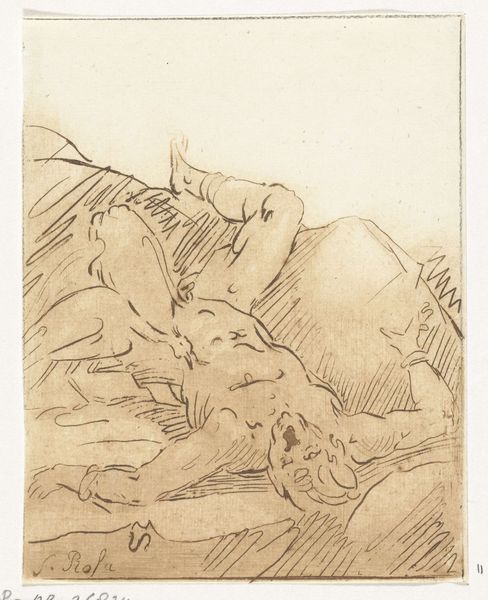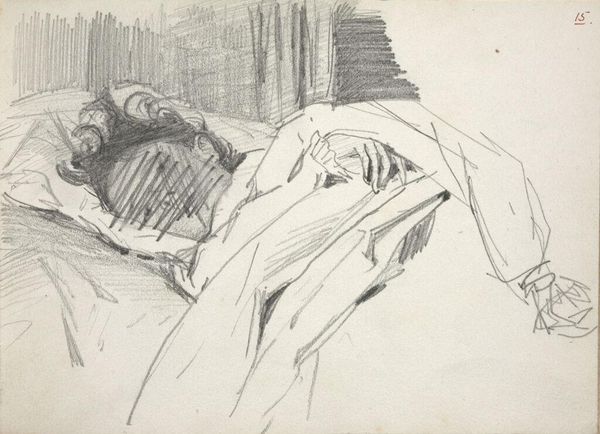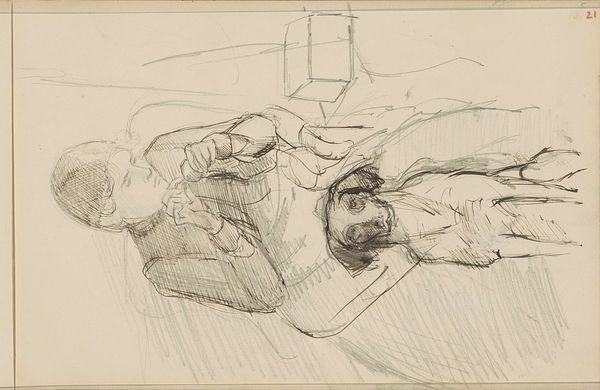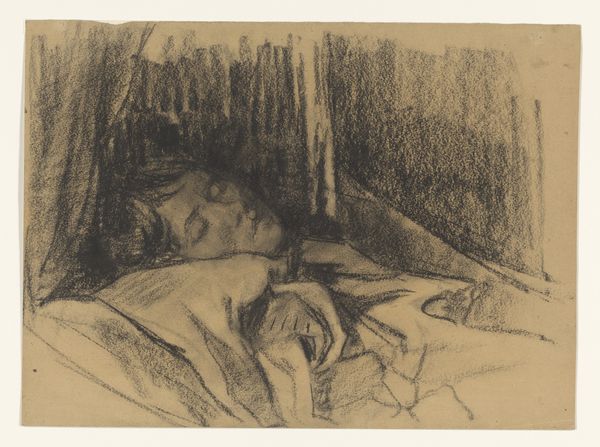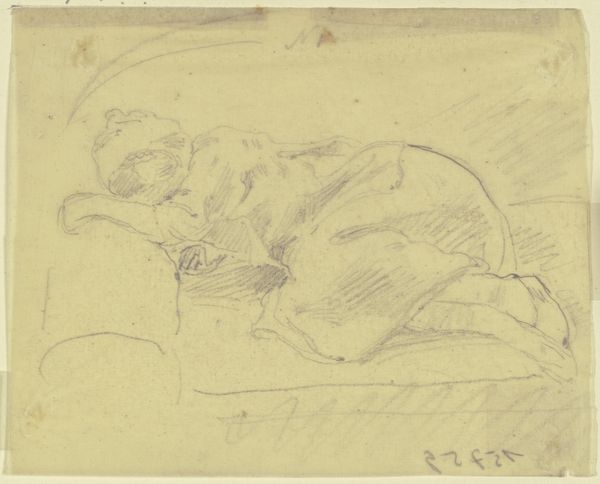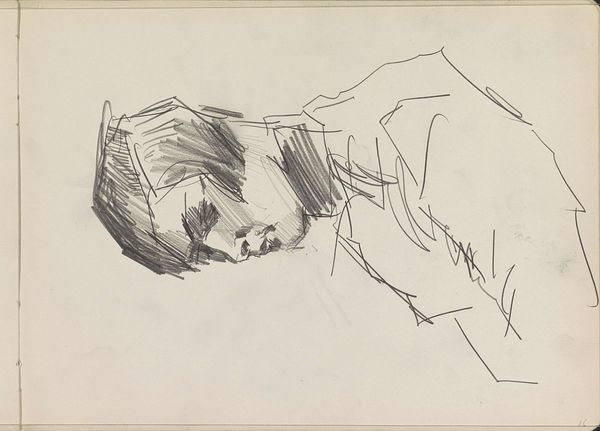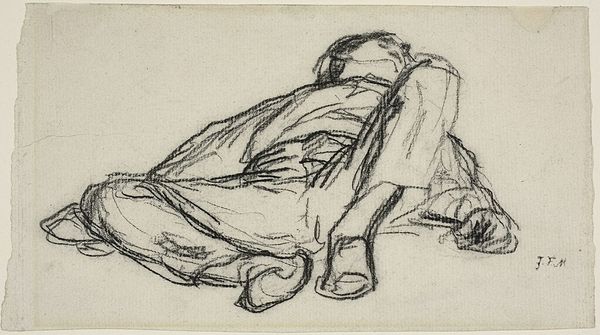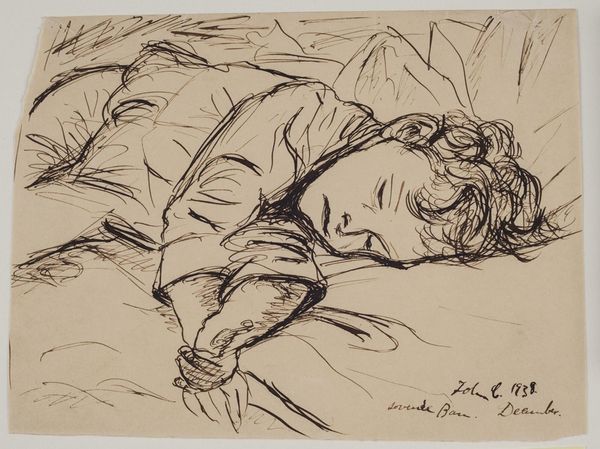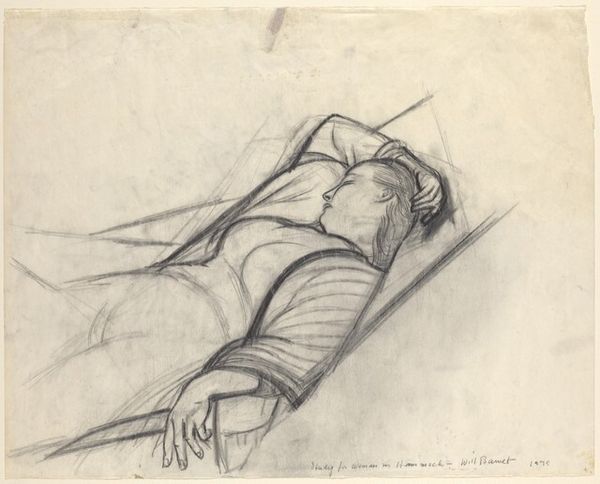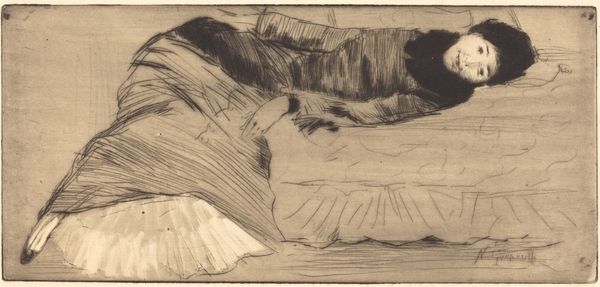
drawing, paper, ink
#
portrait
#
drawing
#
ink drawing
#
pen sketch
#
pencil sketch
#
figuration
#
paper
#
ink
#
pencil drawing
#
portrait drawing
Dimensions: height 306 mm, width 436 mm
Copyright: Rijks Museum: Open Domain
Curator: This is "Liggende vrouw, in kussens, met een boek," or "Reclining Woman with Cushions and a Book," by Rik Wouters, created sometime between 1892 and 1916. It’s an ink drawing on paper. Editor: The immediate sense I get is of quiet intimacy, even comfort. The stark black ink against the bare paper emphasizes the soft lines of the figure. She seems completely lost in her reading. Curator: Indeed, the sketch-like quality gives it an immediacy that invites us to consider Wouters’ engagement with domesticity. How did turn-of-the-century constructions of femininity shape artistic representation and consumption of these private moments? Editor: And was it a genuine intimacy? These scenes of bourgeois women engrossed in books – were they a symbol of privilege? Leisure being itself a marker of class? Or, reading was itself a gateway to a form of liberation. Was that Wouters intention, do you think, or would he have perhaps hoped that she stayed put, so to speak? Curator: Precisely! By positioning the woman with a book, Wouters acknowledges her access to knowledge and perhaps a level of autonomy. However, it also potentially confines her, doesn't it? The cushions act like a barrier, reinforcing the idea of woman existing within a controlled space. This dynamic reveals how the domestic sphere both liberates and restricts female expression. It would have spoken very clearly to contemporary gender politics. Editor: I can definitely see that tension. It's a surprisingly potent message for what looks like a casual sketch. In terms of composition, do you think that is what the thick, bold strokes emphasize the woman's boundaries and constraints, whereas the finer lines express fluidity and change? Curator: The tension within her existence might just have been captured there, perfectly! The bolder strokes act as anchors, tying her to her immediate surroundings, while the delicate, almost fleeting lines, hint at her inner life and expanding awareness. It’s a lovely play. Editor: Absolutely. And while it seems minimalist, there's an entire discourse on display. What seemed like an innocent portrayal is indeed an entire question posed about turn-of-the-century gender and class. Curator: And, for me, that encapsulates the very best of the intersection between art and cultural discourse.
Comments
No comments
Be the first to comment and join the conversation on the ultimate creative platform.

